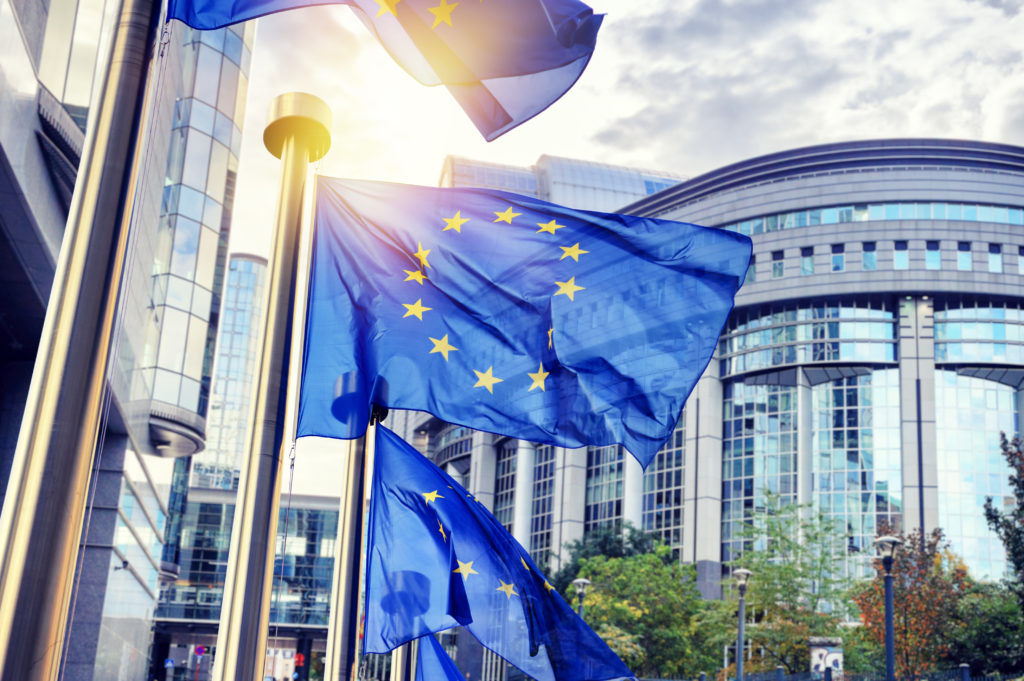Jan Witt, Anaqua
2022 has been an exciting year for the European patent system. The introduction of the Unified Patent Court in January became an important milestone towards reaching a future with the European Unitary Patent and now necessary preparations such as establishing the administration and filling vacant judges' positions are in full swing. Almost 50 years after the first attempts, the introduction of a European patent with a unitary effect could finally happen.
For the European patent system, the year 2022 started with a bang. Austria became the 13th country to ratify the Protocol to the Agreement on a Unified Patent Court on provisional application (PPA). This officially establishes the Unified Patent Court (UPC) as the international organization with exclusive legal competence in matters relating to the European patent and the new European patent with unitary effect (European Unitary Patent - EEP) – a real milestone in European patent law. After all, the UPC is the most important prerequisite for the European Unitary Patent, which is now on the horizon after decades of reaching for it.
Standstill and delays despite intensive cooperation
But the path to the EEP was marked by setbacks. The first attempts to introduce a European Unitary Patent were made as early as 1975, but during the EU integration process, the introduction repeatedly failed due to the ratification of the respective agreements. In the renewed attempt in 2011, the member states approached the European Unitary Patent under the framework of enhanced cooperation. With enhanced cooperation, only countries that are really willing to cooperate participate in the harmonization of European patent law. Currently, these include all EU member states except Spain, Croatia and Poland. The newly created secondary legislation will accordingly only apply to this coalition of the willing. This ensures that the entire project will not fail due to a lack of consent from individual states.
Nevertheless, individual states have involuntarily put the brakes on the project in recent years. The agreement on the UPC was signed in June 2013, but the necessary ratifications had once again been delayed. There are 13 mandatory ratifications, including the three countries with the most patent applications. These are Germany, France and - following the Brexit-related exit of the United Kingdom - Italy. The ratification process in Germany in particular has proven difficult. In 2017 the German Bundestag passed a consent law laying the groundwork for ratification. This was overturned by the Federal Constitutional Court in 2020 following a constitutional complaint, as the vote fell short of the two-thirds majority required for the de facto amendment to the Basic Law.
In the meantime, Germany has passed the consent law again and with the necessary majority in the Bundestag. However, the delay of several years during the proceedings at the Federal Constitutional Court was a bitter setback for the harmonization of patent law as the UPC cannot start without ratification by Germany. The last few years have therefore been a phase characterized primarily by standstill.
How to best prepare for the Unified Patent Court? Learn more on this on-demand webinar.
Real progress at last
In 2022, the European Unitary Patent and the UPC are making real progress. Germany has still not ratified German UPC laws. However, there was movement in the process in the fall of 2021. In September 2021, Germany at least ratified the Protocol for Provisional Application of the Convention. This provisional protocol regulates important preparations for the start of the new patent court - for example, the filling of judges' positions and the establishment of IT. For this to enter into force, it must also be ratified by 13 states. After Germany, Slovenia was the twelfth state to be on board a month later. Finally, it was Austria that became the 13th state to ratify the protocol on January 19, 2022.
Final preparations during the Provisional Application Period
With Austria's approval, the finish line of the procedure to harmonize European patent law is now coming into view. Thus, the provisional application of the Protocol signifies the birth of the Unified Patent Court as an independent international organization. In the so-called Provisional Application Period (PAP) that now follows, the final preparations for the launch of the UPC will be made. The central objective of the PAP is to ensure the functioning of the UPC. It is expected that this phase will last at least eight months. After all, there is still a lot to be done.
The administrative bodies of the UPC will shortly be meeting for their constituent sessions. At the same time, a few issues still need to be resolved in the wake of the Brexit. For example, cases concerning pharmaceutical and chemical patents were originally to be heard in the central chamber in London. Since London will no longer be a venue because of Brexit, an alternative must now be found.
Furthermore, the many vacancies at the UPC must also be filled. During the PAP administrators and judges will be appointed to the various locations of the UPC across Europe. Applications for these positions could already be submitted since May 2016. In the coming months, these appointment procedures will be completed. In total, around 90 people are expected to work at the UPC.
Opt-outs from the start of the Sunrise Period
If the Provisional Application Period is successful, the UPC could be officially launched as early as spring 2023. As the UPC writes on its website, Germany will deposit its instrument of ratification as soon as the UPC member states have established the functioning of the new patent court. Germany's ratification is the final piece of the UPC puzzle. Then, all the conditions for the entry into force of the Agreement as set out in Article 89 would be fulfilled. After all, France, Italy and 14 other states have already ratified the UPC agreement. Germany's ratification then marks the starting point of the so-called Sunrise Period – the last three months before the UPC can finally begin its work.
Now that the introduction of the UPC is foreseeable, owners of a European patent should consider whether they want to make use of the opt-out option. European patents - i.e. those currently granted by the European Patent Office and valid only in certain states - can be withdrawn from the jurisdiction of the UPC during a transitional period of seven years. In the case of an opt-out, national patent courts (and not the UPC) will continue to be responsible for legal proceedings. It should be noted that opt-outs are only possible for European patents. European Unitary Patents, on the other hand, which will also be granted by the European Patent Office in the future, but which are valid in all UPC member states by agreement, fall under the jurisdiction of the UPC in any case. This is because the UPC has exclusive competence for EEPs. The requests for opt-outs can be filed at the beginning of the Sunrise Period.
End of 2022 - home stretch of the UPC
After a long period of standstill, this second half of 2022 will hopefully be the pivotal moment for the European patent system. In particular, the current Provisional Application Period is of enormous importance for the harmonization of European patent law. If everything goes according to plan, the UPC will be able to start in spring 2023. Almost 50 years after the first attempts, the introduction of a patent valid throughout Europe looks like it’s in a good position to succeed.
If you are seeking to opt-out or have questions about the process, Anaqua can help. Learn more about our Opt-Out Service.




